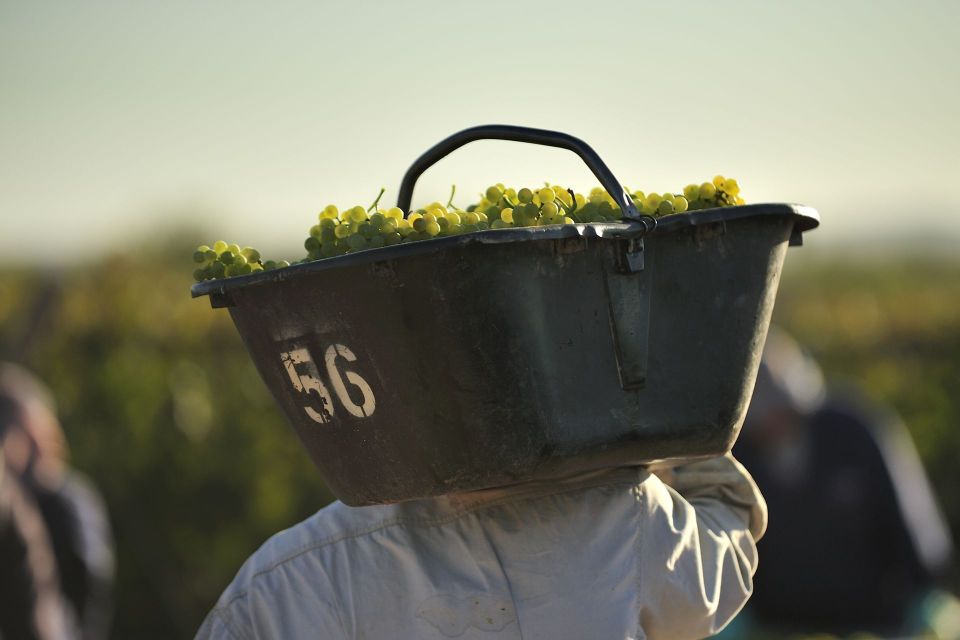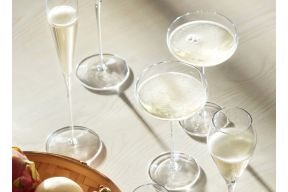What is Champagne? Synonymous with celebration, the fruity effervescent drink is perhaps the most prestigious and famous wine in the world. Its origins, complex, traditional production methods, and captivating history make Champagne a truly unique and exquisite drink.
Table of Contents:
- What is Champagne?
- History of Champagne
- Where is Champagne made?
- What are the best Champagne brands?
- What is the flavour of Champagne?
- What colour is Champagne?
- What are the different styles of Champagne?
- What is the difference between Champagne and sparkling wine?
- How is Champagne made?
- The Champagne bottle
- The Champagne cork
- The Champagne bottle cap or muselet
- How to serve Champagne
- Champagne and food pairing ideas
- Why can Champagne be so expensive?
- Conclusion
What is Champagne?
There are many sparkling wines but very few can claim to be Champagne. Only the highest-quality sparkling wine hailing from the northeast Champagne region of France can truly be called Champagne. This location-based requirement, coupled with strict production specifications are what make Champagne so unique. So, while Champagne is a sparkling wine, not all sparkling wine is Champagne.
History of Champagne
The history of Champagne is quite an interesting one: Champagne was a wonderful accident. Winemakers of the Champagne region produced still wine, somewhat unsuccessfully, for hundreds of years before the sparkling wine revolution began.
The cold winters that plagued the region often (technically) spoiled the wine by halting the fermentation process and causing carbon dioxide bubbles to form. The build-up of gas created enormous pressure, frequently leading to wine bottle explosions. Although considered faulty, the sparkling wine bottles that survived were seen as a bit of a novelty and gained favour among French and English royalty in the late 17th century.
Legend has it that Dom Perignon, the French monk (and now famed Champagne house), determined to bottle this fine sparkling wine, invented the thick glass Champagne bottle and cork we now know. But, although not quite as romantic, many historians believe Dom Perignon was actually set on removing the bubbles, and it was the English who loved the accidentally bubbly French wine so much that they fortified their own wine with sugar and molasses, and used Portuguese cork and heavier glass bottles to avoid explosions.
Whether it was French monks or English wine enthusiasts, the popularity of sparkling Champagne quickly spread across France, England, and Europe, leading to the creation of the Champagne houses we know and love today.
Where is Champagne made?
In the northeast corner of France lies the Champagne wine region. The acidic mixture of chalk and limestone soils are unique to the region and provide excellent drainage. Even in the driest summers, this means vines have the steady water supply needed to achieve the unique balance of acidity, ripeness and fruity aromas associated with Champagne.
Only sparkling wines made in this region can be labelled as Champagne. Although you will find other sparkling wines in France and around the world, only wines produced in the 84,000 acres of Champagne’s vineyards can be legally classed as such.
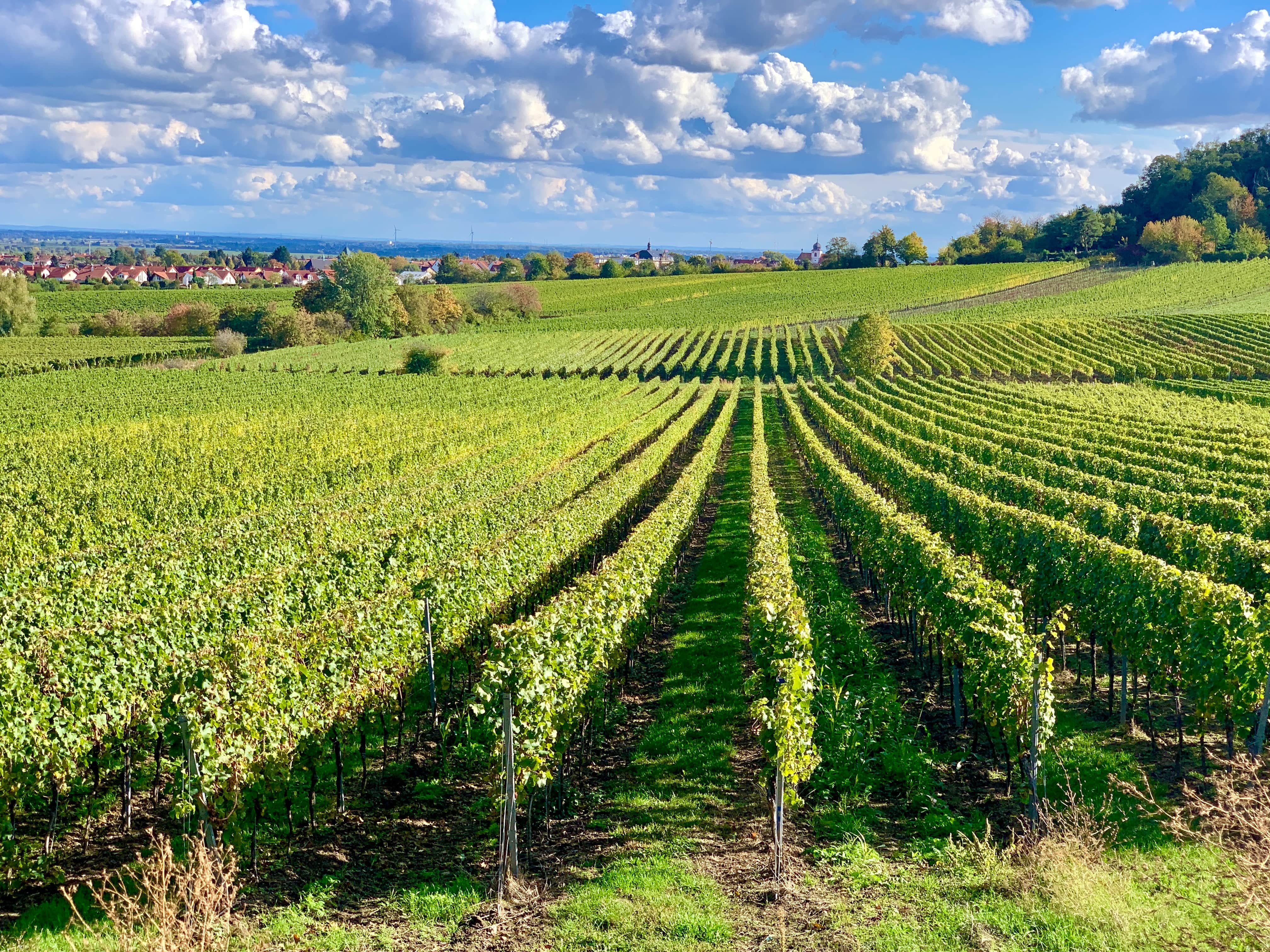
What are the best Champagne brands?
With over 2,000 Champagne houses, you may wonder, what is the best Champagne brand?
- Laurent Perrier: The largest family-owned brand, and one of the world’s most prestigious Champagne houses, Laurent Perrier was established in 1812. Priding itself on the art of blending, it creates unique and elegant Champagnes.
- Armand de Brignac: Run by the Cattier family, this critically acclaimed Champagne house is more than 250 years old. In 2010 its famous Armand de Brignac Ace of Spades Brut Gold was voted the number one Champagne in the world.
- Taittinger Reims Champagne. Founded in 1734, this world-famous Champagne house takes its name from Pierre Taittinger who bought the vineyard in 1932. The uniquely high proportions of chardonnay give Taittinger its signature flavour and make it one of the most popular brands.
- Dom Perignon. Synonymous with the rich and famous, this luxury brand takes its name from the famous 17th-century Benedictine monk, thought to in some part have created the original Champagne. Dom Perignon is only released as vintage Champagne, meaning each vintage is uniquely grown from the best grapes of each season.
- Moet and Chandon. Perhaps one of the most well-known names in Champagne, Moet and Chandon was founded in 1743. Its range of vintage, non-vintage and rosé Champagne makes it a firm favourite.
- Pol Roger. Pol Roger was founded in 1849. Releasing both vintage and non-vintage wines annually, the Champagne house is known for its prestige.
The very best Champagnes, Cuvées de Prestige, are considered the finest products of each Champagne house. Most are more complex wines of a single vintage with finer bubbles, more elegant aromas, and longer finish. See more on our Cuvées de Prestige and other award-winning Champagne.
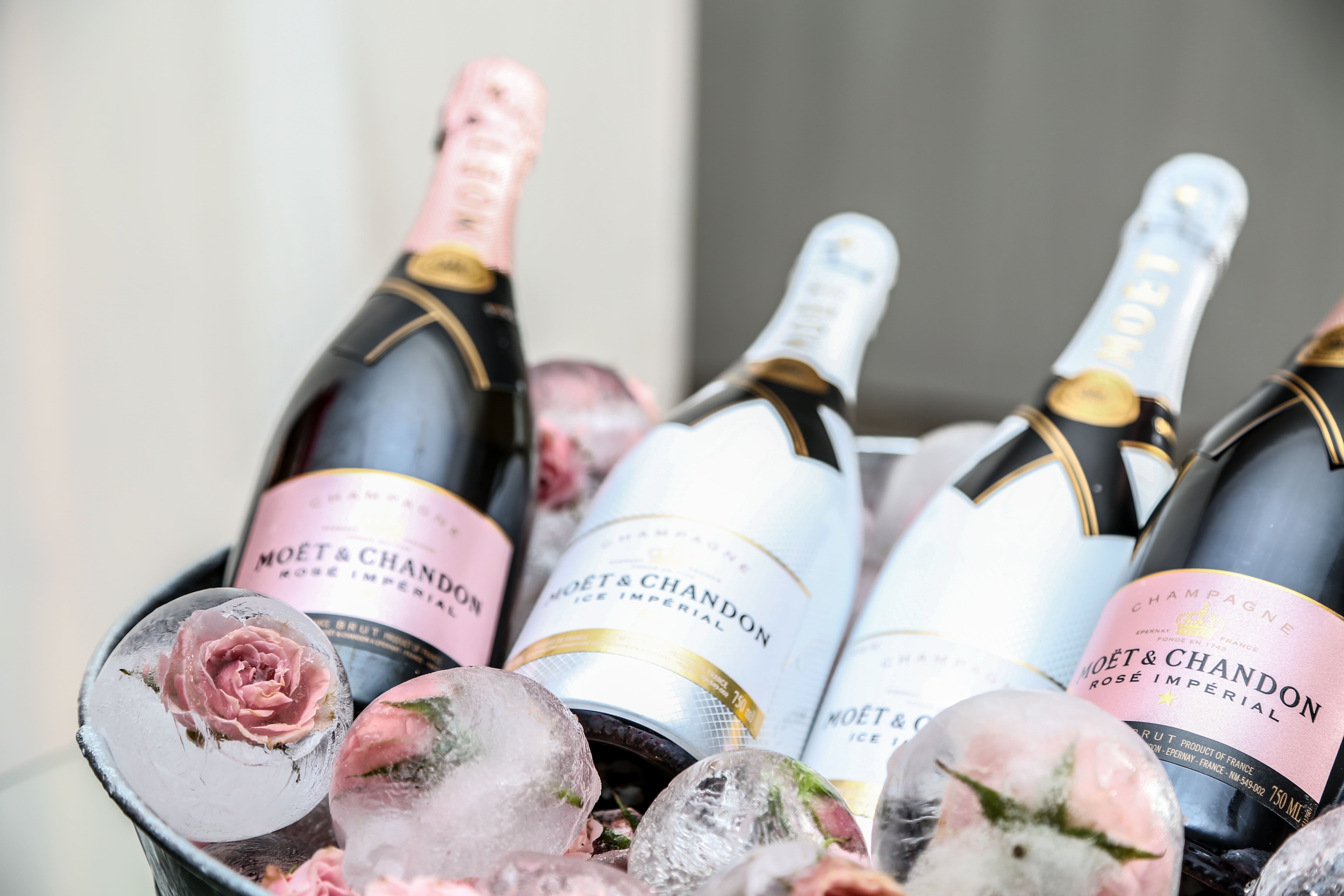
What is the flavour of Champagne?
Champagne’s dryness and high acidity are balanced by a light body and fine bubbles. Most Champagnes have citrus and green fruit aromas with subtle yeast and nutty hints. Champagne often exhibits different aromas and flavours, according to the sugar’s dosage - meaning its sweetness level.
The sweetness level is indicated as follows:
- Brut Nature Champagne (or Zero Dosage Champagne): This wine contains little (up to 3g per litre) or no sugar and is very dry.
- Extra Brut Champagne: This dry wine is slightly sweeter with up to 6g of sugar per litre.
- Brut Champagne: Considered the most popular Champagne, brut has up to 12g of sugar per litre and is a fairly dry wine.
- Extra Sec Champagne: A sweeter Champagne than brut, extra sec wines have 12-17g of sugar per litre.
- Sec Champagne: This Champagne contains 17-32g of sugar per litre and is a much sweeter dry wine.
- Demi-Sec Champagne: Containing 32-50g of sugar per litre, demi-sec is one of the sweeter wines.
- Doux Champagne: Containing 50g of sugar or more per litre, this is the sweetest Champagne.
What colour is Champagne?
Champagne has a distinct amber-like appearance, sometimes composing of white, yellow, orange or pink tones. The colour of each wine is derived from the blend of different grapes used to make it. This is commonly a mix of two grape varieties, pinot noir and Pinot Meunier, and one white variety, chardonnay.
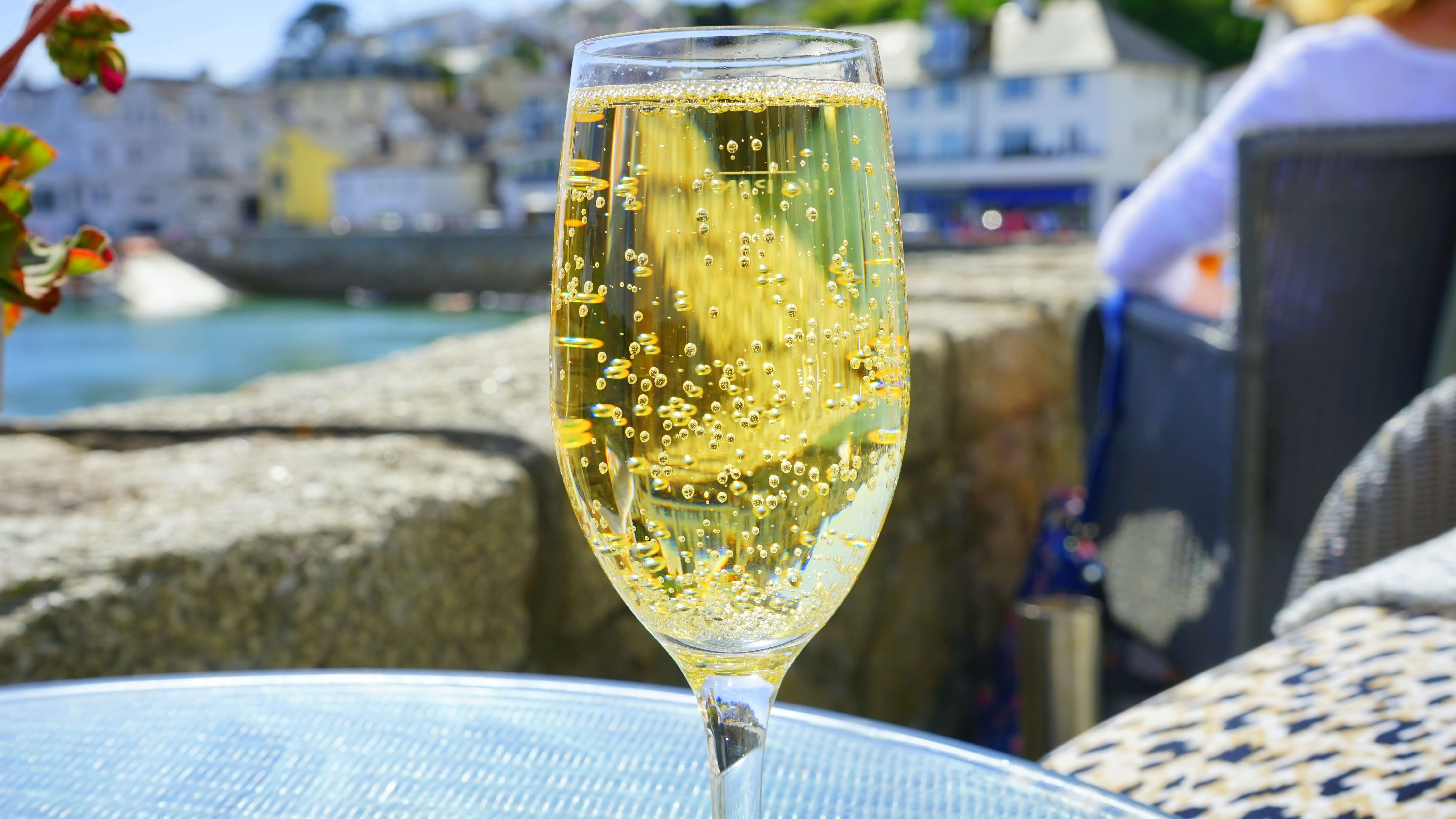
What are the different styles of Champagne?
When choosing Champagne, it's important to understand that as well as varying sweetness, there are also different styles of wine. Champagne styles can be classified under various categories, including:
- Blanc de Blancs Champagne: Usually a much lighter style, this “white from white” Champagne is a white wine made from white chardonnay grapes.
- Blanc de Noir Champagne: Literally translated as “white from black,” this variety of white wine is made from black pinot noir or Pinot Meunier grapes.
- Rosé Champagne: Rosé is most commonly made by blending red and white wines together. The grape juice is marinated with the red grape skins to give rosé its signature pink colour.
- Organic Champagne: Wines produced only with organic ingredients and without the use of chemical pesticides, fertilisers, or genetically modified organisms.
- Vegan Champagne: Champagne produced using vegan-friendly methods. Read our vegan Champagne guide to learn more about this type of Champagne.
As well as style classifications, Champagne can also be split into different types:
- Vintage Champagne: Vintage Champagnes are made from a single harvest and are generally only produced in the most exceptional years.
- Non-Vintage Champagne: Most Champagne is a blend of different vintage wines, used to create consistency of flavour year on year. Non-vintage wines use a base wine and add a mixture of other vintages.
- Multi Vintage Champagne blending: similar to non-vintage wine, multi-vintage Champagne uses a blend of different vintages but with less base wine.
What is the difference between Champagne and sparkling wine?
Champagne is often used as a catch-all for sparkling wine, but wines produced outside of the Champagne region can’t legally be called Champagne. There are many varieties of sparkling wine in other areas of France and across the world: French Crémant, Italian prosecco, Spanish cava, and sparkling wine from the United States.
American sparkling wines are often made using traditional methods with traditional Champagne grapes (chardonnay, pinot noir and pinot Meunier), but critically aren’t produced in Champagne.
What is the difference between prosecco and Champagne? Prosecco, produced from prosecco or glera grapes, hails from the Veneto region in Northeast Italy. Rather than secondary fermentation occurring in individual bottles – à la Champagne – it occurs in pressurised tanks, making prosecco easier and cheaper to produce.
Cava is made from a blend of macabeo, xarello and parellada grapes, originating in Spain’s Northeast region. Cava is typically made using traditional Champagne methods, and like Champagne, comes in different sweetness levels from dry to sweet.
How is Champagne made?
Making Champagne is a time-consuming, complex, and highly regulated process. Due to the soil composition and specific vineyard conditions, the wine can only be made in the Champagne region.
The specifications for making Champagne are incredibly strict and follow the traditional method, or méthode champenoise, as follows:
Primary fermentation
Only three main grape varieties are used in Champagne production: chardonnay, pinot noir and Pinot Meunier. The expert blend of these Champagne grape varieties gives the drink its unique, traditional taste. During the primary fermentation, the grape juice is placed in a tank and fermented dry.
Assemblage
Assemblage is where the intricate art of blending happens. Wines from different grape varieties, vintages and vineyards are combined and bottled. For Champagne producers, this is the critical step in producing a consistent house style each year.
Liqueur de tirage
The liqueur de triage is a mixture of cane sugar and yeast added to the wine in measured quantities. The wine and sugar-yeast mixture is bottled in thick long-necked glass bottles and placed in a cool cellar for secondary fermentation.
Secondary fermentation
Secondary fermentation occurs gradually over 1-3 weeks, producing alcohol and carbon dioxide within the bottle. As the carbon dioxide dissolves in the wine, it creates Champagne’s signature bubbles and sparkling texture.
The bottles are laid sideways to mature and rotated periodically (known as “riddling”) to loosen leftover sediment and move it towards the bottle cap ready for disgorging. French law dictates this process must last between three weeks and 15 months for non-vintage Champagne and at least 36 months for vintage.
Disgorging
The yeast residue that settles in the bottleneck is removed through a process of flash freezing. Once the residue is frozen solid, the bottle cap is opened, and the carbon dioxide pops the frozen residue out of the bottle. The bottle is then topped-up with a small portion of Champagne and sugar known as the Liqueur d’Expedition.
Special Champagnes that have an extended period of ageing prior to disgorgement are labelled R.D. Champagne and are known for their freshness and vitality.
Sealing and Corking
The Champagne is corked and sealed for protection with a wire cage and rested for an additional few months before it is finally ready to be sold.
The Champagne bottle
Champagne bottles are typically made of round green glass, much thicker than wine bottles. The thicker glass prevents the bottle from shattering during the second fermentation and keeps the all-important Champagne bubbles intact.
Champagne comes in a variety of bottle sizes, some more functional and others more extravagant statement pieces.
- Champagne Quarter Bottle: This 20cl mini bottle of Champagne holds two glasses and is ideal as a small gift.
- Champagne Half Bottle: A 37.5cl half bottle of Champagne serves four and is perfect for sharing a glass or two.
- Champagne Standard Bottle: Standard bottles contain 75cl and provide six to eight glasses of Champagne.
- Champagne Magnum: Often touted by wine experts to be superior to a standard-sized bottle for maturing wine, a magnum holds 1.5L and serves around 12 people.
- Champagne Jeroboam: A Jeroboam, named after two kings of Israel, is popular for weddings and big events. The 3L bottle, equivalent to four standard bottles, serves approximately 24 people.
- Champagne Methuselah: Methuselahs, named after the biblical ancestor of Noah, hold 6L of Champagne and serve around 48 people.
- Champagne Salmanazar: A Salmanazar, taking its name from Assyrian kings, is an impressive 9L bottle, containing enough Champagne for 72 people.
- Champagne Balthazar: In reference to the Balthazar king of Babylon, this bottle holds 12L of Champagne and serves around 96 people.
- Champagne Nebuchadnezzar: at a breath-taking 15L, the Nebuchadnezzar, named after the King of the Chaldeans, is a true statement piece. Equivalent to 20 standard bottles, it serves 120 people and will need two people to pour!
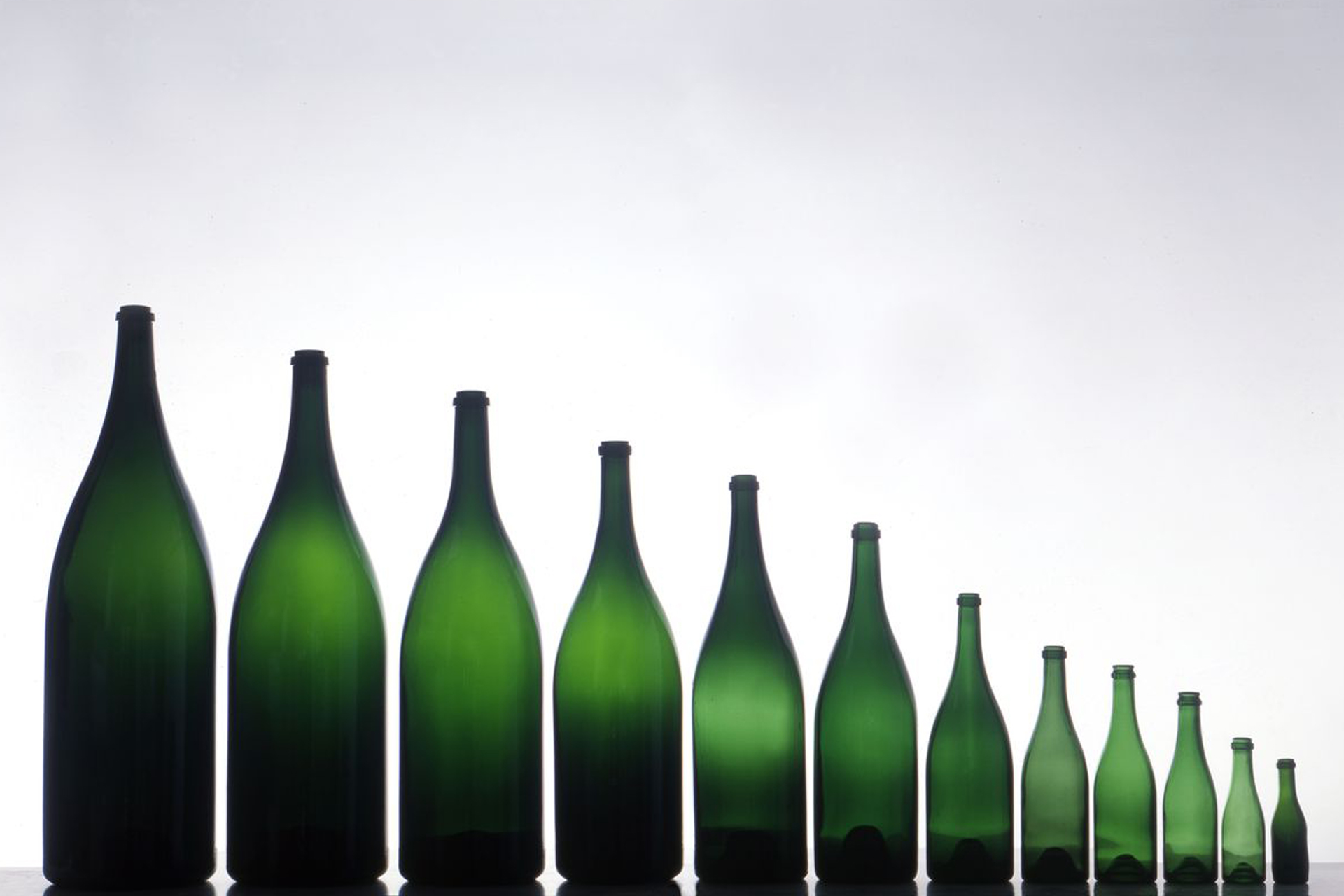
The Champagne cork
The classic Champagne cork is typically made from the bark of Quercus suber, or cork oak trees, which grow predominantly in the Montado forests of Portugal.
A typical cork that is used to seal Champagne bottles has a diameter of 31mm but is compressed to 18mm to fit the bottleneck. As the cork naturally expands, it creates a tight seal around the bottleneck, keeping constant pressure and preventing gas from escaping. Corks are cylindrical when inserted, but due to compression, develop the iconic mushroom shape over time.
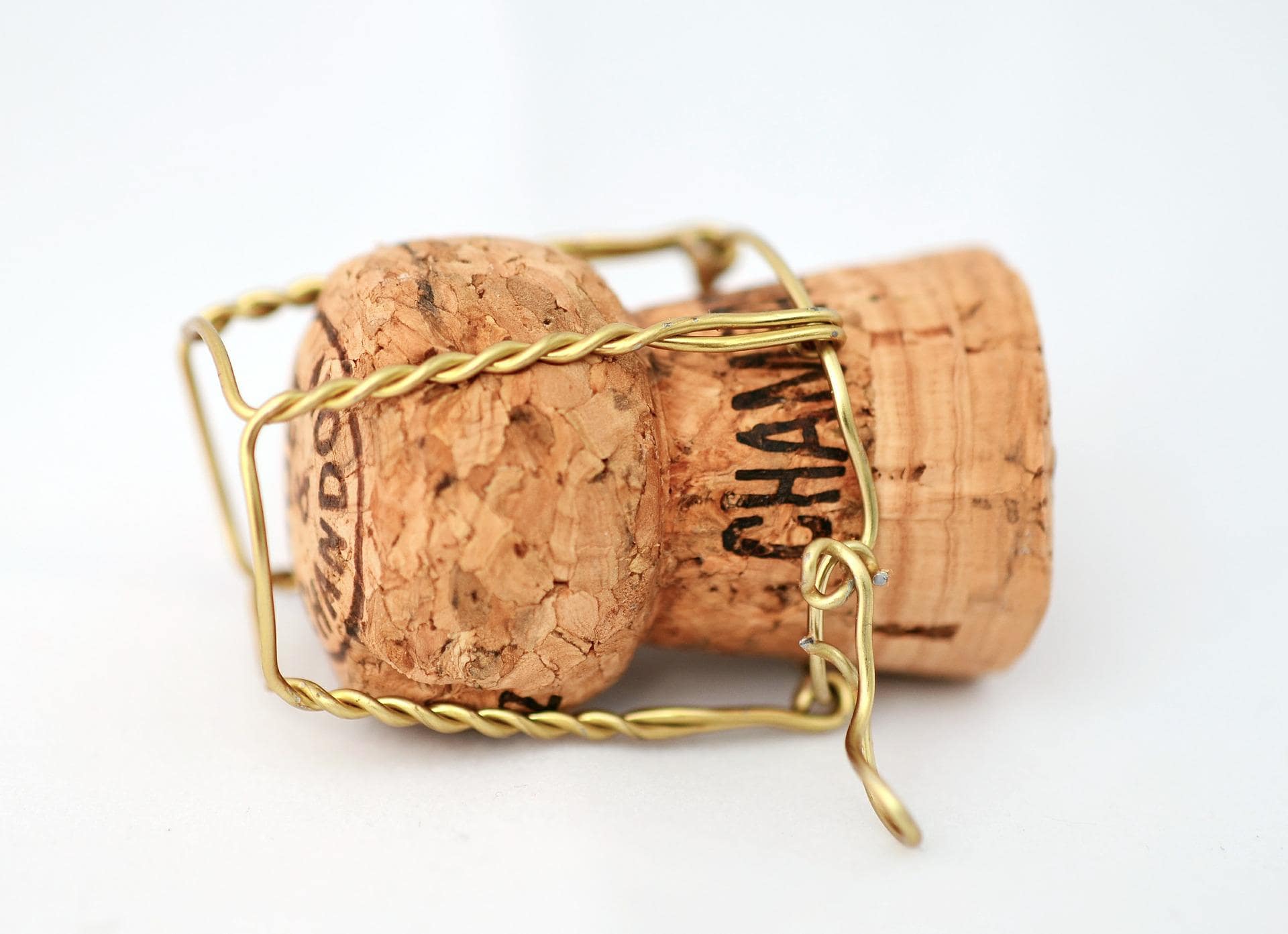
The Champagne bottle cap or muselet
The muselet, translated as “muzzle,” is the wire cage that secures the Champagne cork, keeping the bottle securely sealed and making it safer to open. Rumoured to be the creation of French inventor, Adolphe Jacquesson, the small wire muzzle was designed to replace the less reliable wooden plugs sealed with oilcloth and wax.
There are three parts to a muselet: a lower ring made of soft galvanised wire, the cage itself, and the circular cap. Champagne brands often emboss the circular cap with colourful and beautifully designed house plaques. These unique and ornate designs make Champagne muselets somewhat of a collector’s item, and plaque-enthusiasts, known as placomusophiles, enjoy collecting them.
How to serve Champagne
Champagne glasses
For an optimum Champagne drinking experience, it should be served at 8-10ºC; any colder and the aromas are hard to detect, any warmer and the wine appears heavy.
The best types of Champagne glasses are those with the characteristic tulip shape that showcase the light and delicate aromas without allowing them to escape too quickly. Ideal glasses include Champagne glasses and Champagne flutes. 1950s-style Champagne saucers are perfect for creating an elegant Champagne tower and enhancing the aromatic and visual pleasure of drinking Champagne.
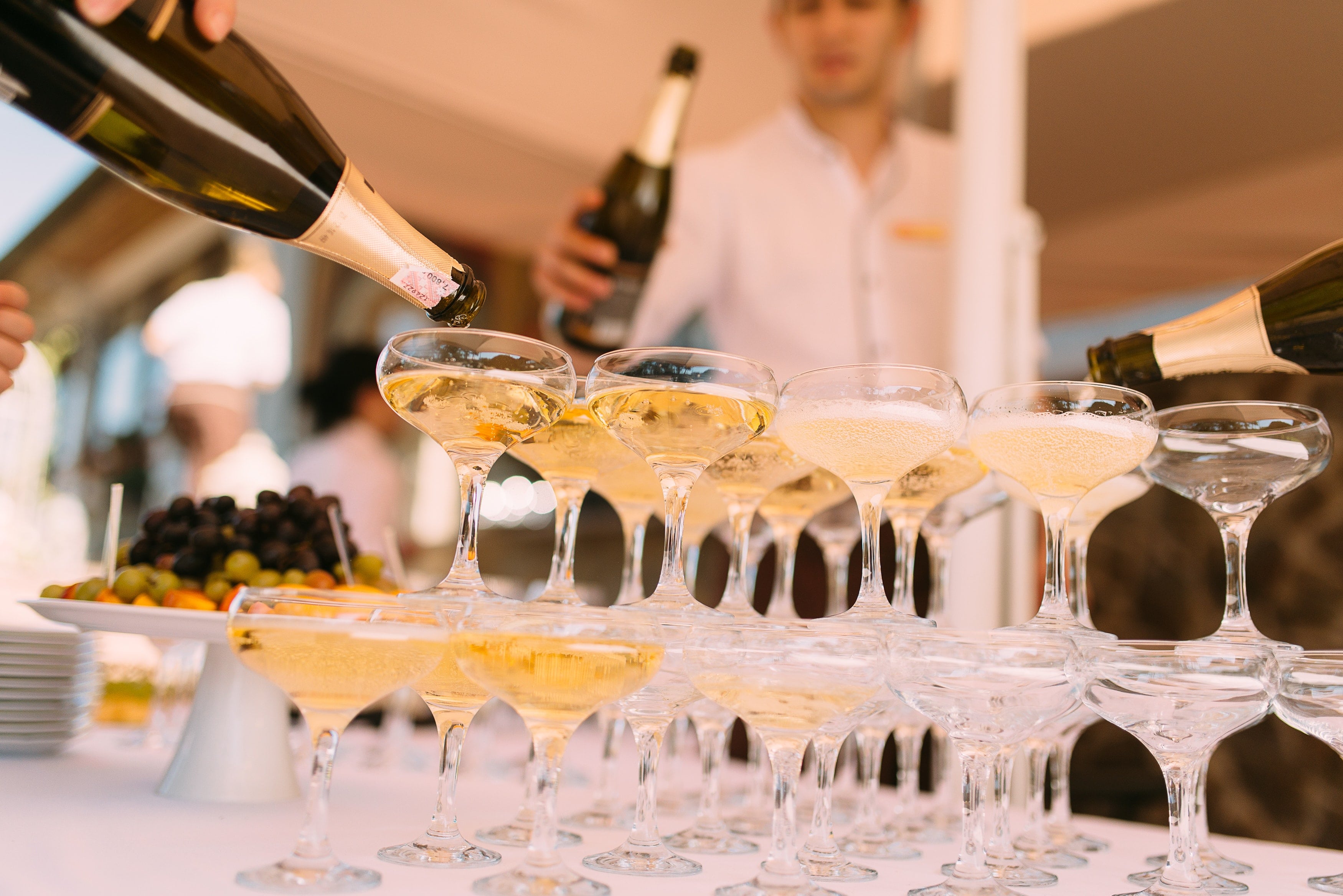
Opening a bottle of Champagne
To open, untwist the muselet counterclockwise while keeping pressure on the cork to prevent premature popping. Twist the bottle rather than the cork to avoid the cork breaking. Once the cork begins to loosen, slowly start to pull the cork out. It will quickly release, and you’ll hear a lovely, gentle hiss.
For something a little more theatrical, Sabrage is a technique of opening Champagne using a sabre or sword. Believed to have been invented by Napoleon during the French Revolution, it adds a certain ceremonial flair. Although it might appear that the neck of the Champagne bottle is sliced open, no glass should be cut in the process; the cork is simply pushed up and out by striking the weakest point of the bottleneck with the blade.
Pouring Champagne
For a perfect pour, hold the Champagne glass at a 45-degree angle. Press your thumb into the punt (the large indent on the bottom of the bottle) and pour the Champagne slowly into the glass. For best results, pour about an inch of Champagne into the glass first and pause to allow the effervescence to subside before continuing to pour. Good etiquette is to half-fill the glass to allow the delightful Champagne aromas to fill the top half.
For a more vivacious way to share, spraying champagne is a popular way to celebrate. The tradition started in 1967, when Dan Gurney, an American racing driver, decided to place his thumb over a bottle of Champagne, shake it, and intentionally spray Henry Ford II and the crowd for fun. The celebratory act caught on and is now a tradition in sporting wins and celebratory events across the world.
Champagne and food pairing ideas
Champagne is often used to elevate cocktails or served as a toasting wine, but it’s also a great accompaniment to a range of different foods.
Dry Champagne pairs fantastically with light seafood and chicken dishes – try oysters, ceviche, or a chicken Caesar salad - but it goes equally well with less delicate dishes like crispy fried chicken.
Sweet Champagne pairs perfectly with fruity desserts like strawberry crepes and apricot tarts. It’s also a great accompaniment to soft creamy cheeses – try pairing with brie or mascarpone for a delicious treat.
Check more Champagne food pairing ideas.
Why can Champagne be expensive?
The complex and meticulous production process makes it more time-consuming; hand-picking grapes, and that the grapes only come from the Champagne region and often from very small, exclusive vineyards, the blending process creating specialist house styles year after year, second fermentation in individual bottles, and riddling all take specialist skill and time. This all makes Champagne a more expensive product compared to sparkling prosecco or cava but also gives Champagne its unique flavour and texture.
Whether celebrating a wedding, enjoying an indulgent cocktail, or giving a special gift, Champagne, with its unique and exciting flavours, traditional production methods, and romantic origin story continues to make it the elegant drink of choice.

